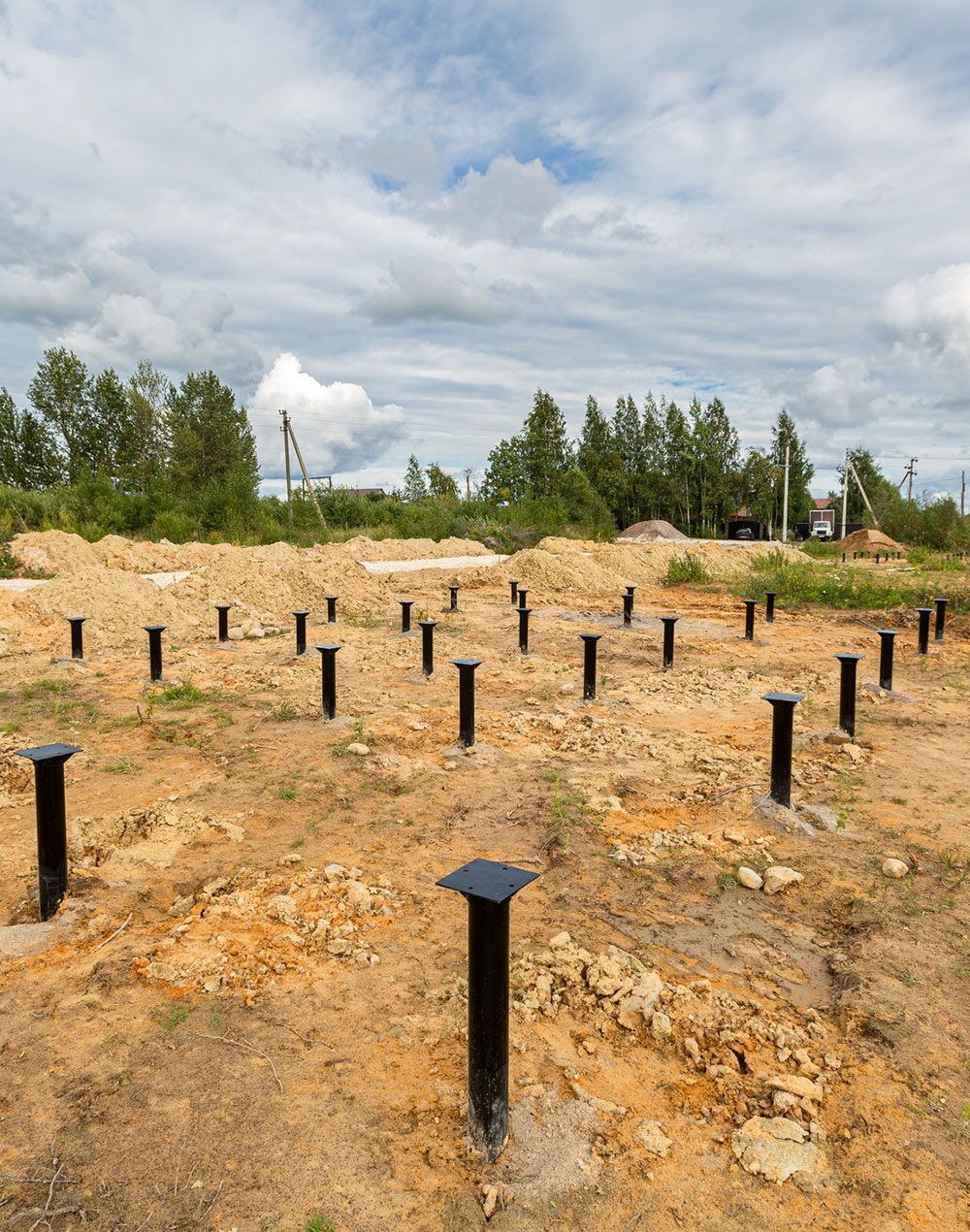Helical Pier Foundations for the
Energy Sector
"Helicals are Estimated to Reduce Your Carbon Footprint by over 98.5%"
Helical Piers for Renewable Energy
Helical piers, also known as screw piles, helical piles, or helical anchors, are foundation systems widely used in renewable energy projects, particularly in the context of solar and wind energy. These piles are engineered to provide strong and reliable support for various structures, including battery energy storage systems (BESS), substations, solar panels, and wind turbines.
● BESS Projects: Helical piers are an increasingly popular choice in battery energy storage systems due to their numerous advantages, including ease of installation, load-bearing capacity, and adaptability to various soil conditions. As the demand for energy storage systems continues to grow, helical piers offer a reliable foundation solution for these crucial infrastructure projects.
● Substations: Helical piers offer excellent load-bearing capacity, ensuring the stability of the substation structure even in soft or unstable soil conditions. Installing helical piers generates less noise and vibration compared to other foundation techniques, making them suitable for projects near residential areas or locations with noise restrictions. High-side breakers, low-side breakers, static masts, dead-end structures, control buildings, transformers, and HV cabinets are some of the various structures that can be supported by helical pier foundations.
● Solar Energy Projects: Helical piers are commonly used to support solar panel arrays. The piers are screwed into the ground, penetrating the soil until they reach a stable load-bearing layer. This creates a solid foundation for solar panels, ensuring stability and longevity. Helical piers are ideal for solar installations because they offer a quick and cost-effective foundation solution, even in challenging soil conditions. They can be easily installed with minimal environmental impact, making them suitable for both small-scale and large-scale solar farms.
●
Wind Energy Projects: Helical piers are also utilized in wind energy projects, particularly for onshore wind turbines. The piers are used to anchor the turbine towers securely to the ground. The twisting action of the helical piers during installation compacts the surrounding soil, enhancing stability and load-bearing capacity. Helical pier foundations are favored in wind energy due to their ease of installation, minimal site disruption, and suitability for various terrains and soil types.

The Benefits of Helical Piers in Renewable Energy Projects
● Rapid Installation: Helical piers can be installed quickly, significantly reducing construction timelines for renewable energy projects.
● Cost-Effectiveness: Compared to traditional concrete foundations, helical piers often offer cost savings due to reduced labor and materials required for installation.
● Versatility: Helical piers can be installed in various soil conditions, including soft or unstable soils that may not be suitable for other foundation types.
● Environmental Impact: The installation process of helical pier causes minimal disturbance to the surrounding environment, making them environmentally friendly.
● High Load-Bearing Capacity: Helical piers are designed to withstand substantial vertical and lateral loads, ensuring the stability and safety of renewable energy structures.
● Reusability: In some cases, helical piers can be removed and reused, making them a sustainable foundation option.
● Seismic Resistance: Helical piers provide excellent resistance to seismic forces, which is particularly important for BESS located in earthquake-prone regions.
If you’d like to use helical piers in your next renewable energy project,
contact the pros at CAPRA Energy Solutions today.

